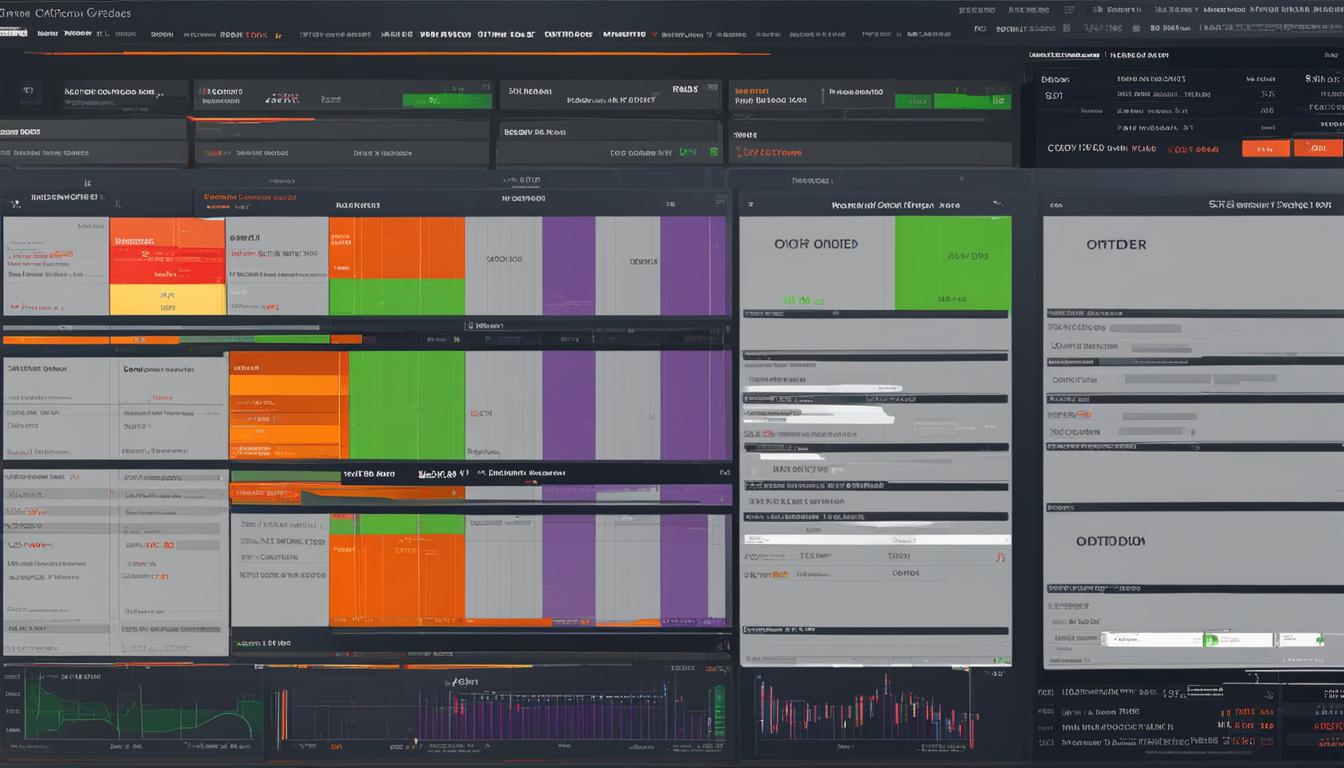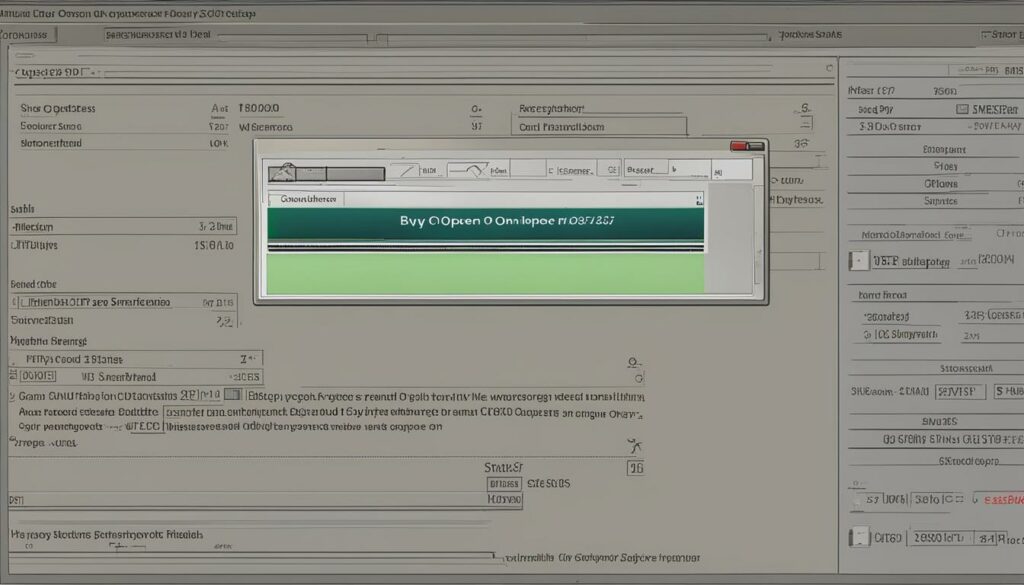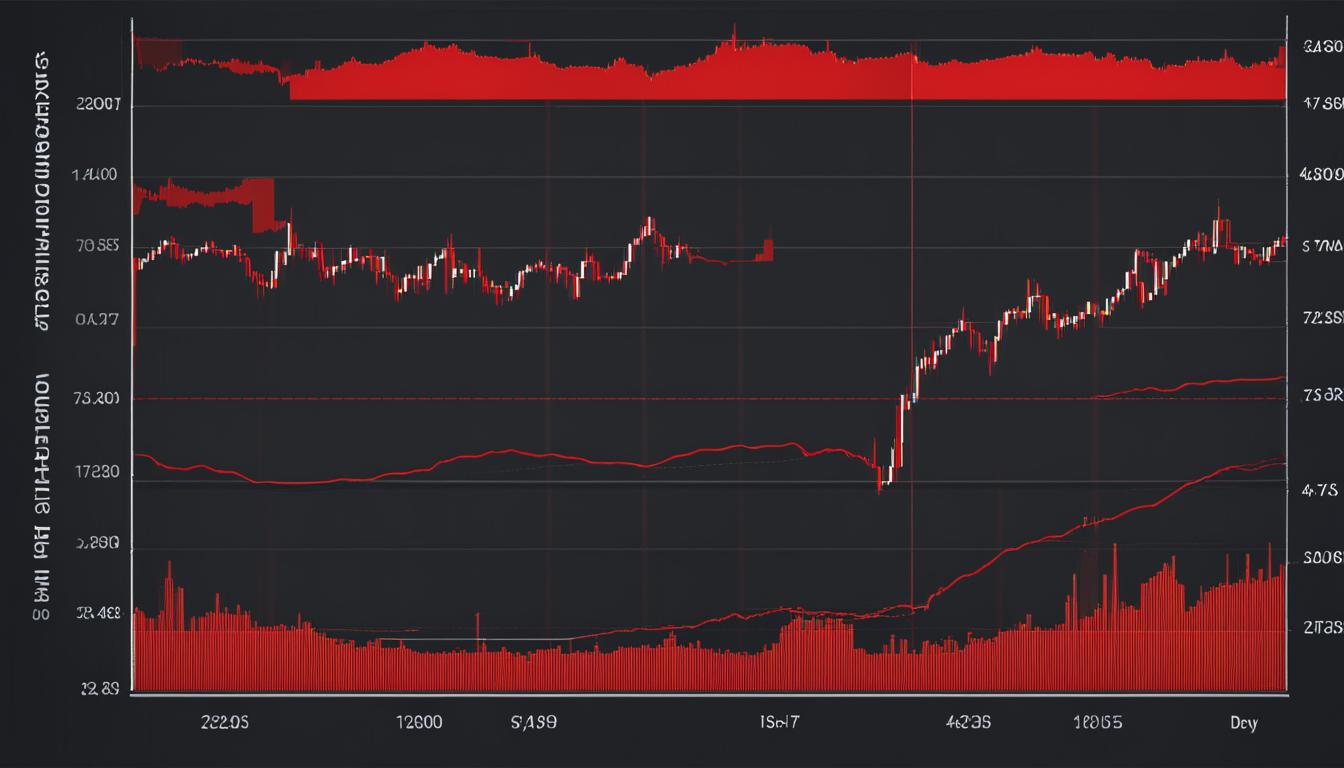Types Of Option Orders: An Overview For Beginners


Are you new to the world of options trading? If so, it’s important to familiarize yourself with the different types of option orders available. These orders play a crucial role in executing your trading strategies and can significantly impact your investment decisions. In this article, we will provide an overview of the various option order types and discuss their importance for beginners like you.
Key Takeaways:
- Understanding the different types of option orders is essential for beginners in options trading.
- There are four main types of option orders: Buy To Open, Sell To Close, Sell To Open, and Buy To Close.
- Each order type serves a specific purpose and must be selected carefully based on your trading goals.
- Combination orders, such as One-Trigger-Other (OTO) and One-Cancel-Other (OCO) orders, can be used to implement more complex trading strategies.
- Consider factors like filling orders, order timing, and exit orders, such as stop loss or profit taking points, to optimize your trading experience.
Buy To Open
A Buy To Open order is the most common type of option order. It is used to open a position by buying a specific option contract. This order is placed when an investor wants to go long on a particular option contract.
For example, imagine we have a trader named Emily who believes that the price of a stock, ABC Company, will increase in the next month. To profit from this anticipated price increase, Emily decides to buy a call option. She places a Buy To Open order for the call option, giving her the right to purchase the stock at a specified price before the option expires.
In this scenario, Emily is opening a position by buying the call option, and she will hold this position until either the option expires or she decides to sell the option.
Buying options allows investors to control a larger amount of stock for a fraction of the cost compared to buying the stock directly. It offers leverage and the potential for greater profits if the stock price moves in the anticipated direction.
Buy To Open Example:
| Option Contract | Price | Expiration Date |
|---|---|---|
| ABC Call Option | $2.00 | 30 days |
In the example above, Emily buys a call option on ABC Company with a price of $2.00 per contract. The option has an expiration date of 30 days from the date of purchase. This Buy To Open order allows Emily to open a long position on ABC Company and potentially profit from a rise in its stock price.


In summary, a Buy To Open order is used to open a position by buying a specific option contract. It allows investors to go long on a particular option and potentially profit from a rise in the underlying stock price. This order is commonly used by traders looking to take advantage of leverage and limited risk offered by options trading.
Sell To Close
A Sell To Close order is an essential type of option order that allows investors to close their positions by selling the option contracts they own. This order is typically used when investors want to exit their current option positions and lock in any gains or manage losses. By placing a Sell To Close order, investors can effectively close their positions and liquidate their option contracts, thereby completing their trading strategy.
When executing a Sell To Close order, it is crucial to consider the price at which the option contracts are sold. Investors should aim to sell their contracts at a favorable price to maximize their profits or minimize their losses. Market conditions, such as the supply and demand for the option contract, can influence the price at which the contracts can be sold.
It is important to note that a Sell To Close order is the opposite of a Buy To Open order. While a Buy To Open order is used to open a position by buying specific option contracts, a Sell To Close order is used to close a position by selling the option contracts that the investor owns. By understanding these different order types, investors can effectively manage their option positions and make informed trading decisions.


Example
John holds a call option contract on a tech stock. As the stock price rises, John decides to close his position and secure his profits. He places a Sell To Close order for his call option contract, instructing his broker to sell the contract at the best available price. By executing this order, John successfully closes his position and realizes his gains from the option trade.
| Order Type | Purpose |
|---|---|
| Buy To Open | Used to open a position by buying option contracts |
| Sell To Close | Used to close a position by selling option contracts |
| Sell To Open | Used to open a position by selling option contracts |
| Buy To Close | Used to close a short position by buying back option contracts |
Sell To Open
A Sell To Open order is a less commonly used type of option order. It is used to open a position by selling a specific option contract. This order is placed when an investor wants to short sell a particular option contract. Short selling involves selling assets that the investor does not own, with the expectation that the price of the asset will decrease, allowing them to buy it back at a lower price and make a profit.
When placing a Sell To Open order, the investor receives a premium for selling the option contract. The premium is the price that the buyer pays for the right to exercise the option. The investor assumes the obligation to sell the underlying asset if the buyer chooses to exercise the option. It is important to note that short selling carries higher risks compared to buying options, as the potential losses are unlimited if the price of the underlying asset rises significantly.
A Sell To Open order is commonly used in options trading strategies such as the Short Call Option strategy. In this strategy, the investor sells call options on an underlying asset that they believe will decrease in price. By selling the call options, the investor collects the premium and hopes that the price of the underlying asset remains below the strike price, allowing them to retain the premium without having to deliver the assets.
Table: Comparison of Buy To Open and Sell To Open orders
| Buy To Open | Sell To Open | |
|---|---|---|
| Purpose | Open a long position | Open a short position |
| Action | Buy option contract | Sell option contract |
| Obligation | None | Agree to sell the underlying asset if the option is exercised |
| Risk | Limited to the premium paid | Unlimited if the price of the underlying asset rises significantly |
By understanding the different types of option orders, investors can effectively implement various trading strategies to capitalize on market movements. It is crucial to carefully consider the risks and potential rewards of each order type before executing a trade. Additionally, it is important to stay updated with market trends and news that may impact the price of the underlying assets.


Buy To Close
A Buy To Close order is used to close a Sell To Open position. It is placed when an investor wants to buy back an option contract that they have previously sold short. This order is used to close a short position and exit the trade. When executing a Buy To Close order, investors are essentially buying the option contract back from the market, effectively canceling their short position.
Buy To Close orders are typically used when an investor believes that the price of the underlying asset will rise, and they want to close their short position before the option contract expires. By closing the short position, investors can lock in their gains or limit their losses. It is important to note that a Buy To Close order can only be placed for an option contract that has been previously sold short through a Sell To Open order.
When placing a Buy To Close order, investors must specify the quantity and the strike price of the option contract they want to buy back. They can choose to partially or fully close their short position depending on their trading strategy and market conditions. It is important to carefully consider the timing and execution of Buy To Close orders to ensure that they are executed at the desired price and within the desired timeframe.
It is crucial for options traders to understand how to effectively use Buy To Close orders to manage their short positions and exit trades in a timely manner. By mastering this order type, investors can maximize their profit potential and minimize their risk exposure.
| Advantages | Disadvantages |
|---|---|
| – Allows investors to close a short position and exit a trade | – Can only be placed for options that have been sold short |
| – Provides the opportunity to lock in gains or limit losses | – Timing and execution are crucial for achieving desired results |
| – Flexibility to partially or fully close a short position | – Requires careful consideration of market conditions |
By understanding how to effectively use Buy To Close orders, options traders can navigate the market with confidence and make informed trading decisions. This order type is an essential tool for managing short positions and closing trades in a timely manner. Whether it’s to lock in gains or limit losses, mastering the Buy To Close order can significantly enhance an investor’s trading success.


Combination Orders
When it comes to implementing advanced option strategies, combination orders play a vital role. These orders involve the use of multiple option contracts to create complex trading strategies that can help traders achieve specific objectives. By combining different option positions, investors can potentially hedge risks, generate income, and capitalize on market opportunities.
There are two main types of combination orders: One-Trigger-Other (OTO) and One-Cancel-Other (OCO) orders. OTO orders are designed to activate a secondary options order once the primary order is filled. This allows traders to execute multiple legs of a strategy in a coordinated manner. On the other hand, OCO orders are used to execute two trades simultaneously but cancel one trade if the other trade is filled. This allows for more precise control over the execution of complex option strategies.
Combination orders are particularly useful when implementing multi-legged option strategies such as spreads, straddles, and condors. These strategies involve the simultaneous buying and selling of multiple option contracts to take advantage of different market conditions or price movements. By using combination orders, traders can efficiently manage the execution of these strategies and adjust their positions as market conditions change.
It is important to note that combination orders require careful consideration and planning. Traders should thoroughly analyze the potential risks and rewards of a strategy before executing combination orders. Additionally, it is crucial to monitor the market closely and adjust the strategy as necessary. By understanding and effectively utilizing combination orders, traders can enhance their ability to implement sophisticated option strategies and potentially achieve consistent profits.


Table: Example of a Combination Order – Iron Condor Strategy
| Leg | Option Type | Strike Price |
|---|---|---|
| 1 | Sell To Open Call | 45 |
| 2 | Buy To Open Call | 48 |
| 3 | Sell To Open Put | 42 |
| 4 | Buy To Open Put | 39 |
Note: This table illustrates the legs of an iron condor strategy. The leg numbers represent the order in which the trades are executed. In this example, the trader would first sell to open a call option with a strike price of 45, then buy to open a call option with a strike price of 48, followed by selling to open a put option with a strike price of 42, and finally buying to open a put option with a strike price of 39.
Conclusion
Understanding option orders is crucial for developing effective trading strategies in the options market. By selecting the appropriate order type, we can open and close positions, manage risk, and maximize our trading potential.
Among the popular option order types, Buy To Open is commonly used to open a long position by buying a specific option contract. Sell To Close is used to close a position by selling the option contract we own. Sell To Open is less commonly used and is used to open a short position by selling an option contract. Lastly, Buy To Close is used to close a short position by buying back the previously sold option contract.
Combination orders can be utilized to implement more complex trading strategies. One-Trigger-Other (OTO) orders facilitate the coordination of multiple option positions, while One-Cancel-Other (OCO) orders allow for the simultaneous execution of two trades, canceling one when the other is filled.
When utilizing option orders, it is also important to consider filling orders, order timing, and exit orders such as stop loss or profit-taking points. By mastering option order strategies and incorporating them into our trading approach, we can enhance our ability to navigate the options market successfully.
FAQ
What are the different types of option orders?
The four main types of option orders are Buy To Open, Sell To Close, Sell To Open, and Buy To Close.
What is a Buy To Open order?
A Buy To Open order is used to open a position by buying a specific option contract. It is placed when an investor wants to go long on a particular option contract.
What is a Sell To Close order?
A Sell To Close order is used to close a position by selling the option contract that the investor owns. It is placed when an investor wants to exit their current option position.
What is a Sell To Open order?
A Sell To Open order is used to open a position by selling a specific option contract. It is placed when an investor wants to short sell a particular option contract.
What is a Buy To Close order?
A Buy To Close order is used to close a Sell To Open position. It is placed when an investor wants to buy back an option contract that they have previously sold short.
What are combination orders?
Combination orders involve a combination of different option contracts and are used to coordinate the entry or cancellation of multiple option positions.
What are One-Trigger-Other (OTO) orders?
OTO orders activate a secondary options order when the primary order fills.
What are One-Cancel-Other (OCO) orders?
OCO orders execute two trades simultaneously and cancel one trade when the other is filled.
Why is it important to understand option orders?
Understanding the different types of option orders is essential for beginners to navigate the options trading market and develop effective trading strategies.
How can combination orders be used in trading strategies?
Combination orders can be used to implement more complex trading strategies involving multiple option contracts.
Are there any other factors to consider when placing option orders?
Yes, it is important to consider filling orders and order timing, as well as exit orders such as stop loss or profit taking points.
What is the overall importance of option orders in options trading?
A thorough understanding of option orders is crucial for successful options trading as it allows investors to open and close positions, manage risk, and maximize their trading potential.




